Yesterday (Saturday) we went out for the day to visit Ben Law's place - Prickly Nut Wood, over in West Sussex. You can read more about him on his website: http://www.ben-law.co.uk/
He was having an open day for the Small Woods Association, and although it was an 80 mile drive for us, it was well worth it as we learned a lot - his wood is similar to ours in some ways, and he's been managing it for many years. It would take me too long to write a detailed article, so I'll simply put in the pictures from the day with some explanation...
The visit started with a 3-hour tour of Ben's woods, with lots of explanations and many chances to ask questions on management, wildlife and anything else. The woods were beautiful:
The woods were beautiful: One thing I noticed immediately was that the stocking rate was well above what it is in our wood:
One thing I noticed immediately was that the stocking rate was well above what it is in our wood: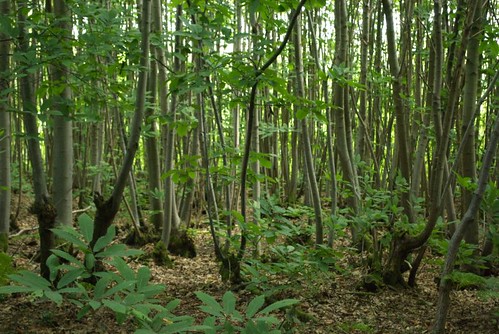 On asking Ben about this, he thought the reduced number of chestnut stools was probably due to our oak standards not being managed for many decades - they should have been periodically felled and new ones planted. At least we've made a step in the right direction by thinning some of the oaks. Ben's advice was for us to use layering (see last section on this page) in winter 2009/10 to increase the stocking rate.
On asking Ben about this, he thought the reduced number of chestnut stools was probably due to our oak standards not being managed for many decades - they should have been periodically felled and new ones planted. At least we've made a step in the right direction by thinning some of the oaks. Ben's advice was for us to use layering (see last section on this page) in winter 2009/10 to increase the stocking rate.
One other thing I'd like to encourage is some chestnut standards for nut production. I was amazed to see the size of some of the chestnuts in Ben's wood: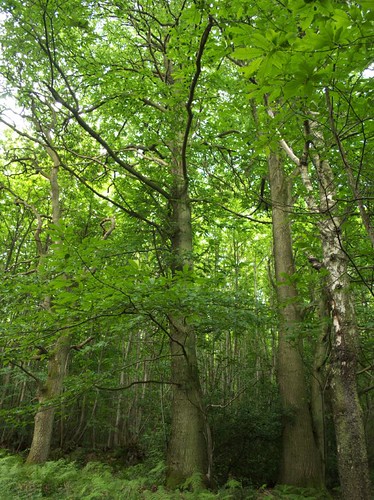 We have some larger stools that are healthy, so perhaps we can single some of them, allowing the best stem to grow into a mature tree.
We have some larger stools that are healthy, so perhaps we can single some of them, allowing the best stem to grow into a mature tree.
Unlike our wood, Ben's is partly on a hillside, which makes extraction harder, though at least the entrance is at the bottom of the hill.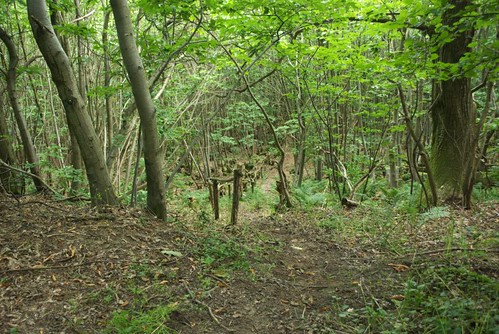 Here's a ~2 acre coupe Ben cut last winter, looking similar to our area, just a lot bigger!
Here's a ~2 acre coupe Ben cut last winter, looking similar to our area, just a lot bigger! And here's an area that was cut the winter before - so this is what our cut area should look like in a year's time! Apparently this is where nightjars like to nest, so it's good to always have a patch that's around this height.
And here's an area that was cut the winter before - so this is what our cut area should look like in a year's time! Apparently this is where nightjars like to nest, so it's good to always have a patch that's around this height.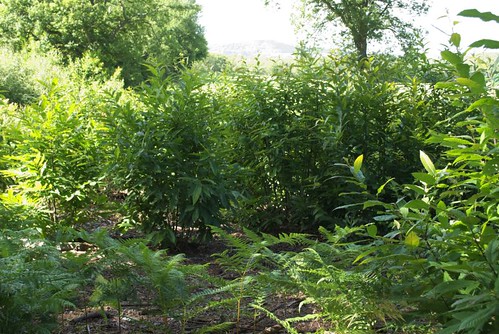 Ben also showed us some areas where the coppice has been neglected. As you can see, the trees self-single and grow large, with little of the ground-level plants that so many species of wildlife need to live in.
Ben also showed us some areas where the coppice has been neglected. As you can see, the trees self-single and grow large, with little of the ground-level plants that so many species of wildlife need to live in. Ben was asked why he's not cut this section yet - the answer was that he doesn't cut a tree until he knows who he's going to sell the produce too. Once the right buyer or market is ready, he'll cut this section and bring it back into cycle for timber production and biodiversity.
Ben was asked why he's not cut this section yet - the answer was that he doesn't cut a tree until he knows who he's going to sell the produce too. Once the right buyer or market is ready, he'll cut this section and bring it back into cycle for timber production and biodiversity.
One of the keys to bringing coppice back into management is having a market for the wood, unless you have the spare cash to just get the work done without selling anything! Charcoal burning is one way of turning otherwise low-value wood into a high-value product, although the demand for charcoal depends on how the summer weather turns out... Here's a large kiln waiting to be emptied: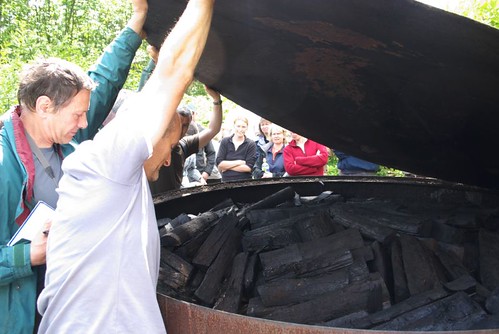 Back at his base, we had lunch in his outdoors kitchen:
Back at his base, we had lunch in his outdoors kitchen: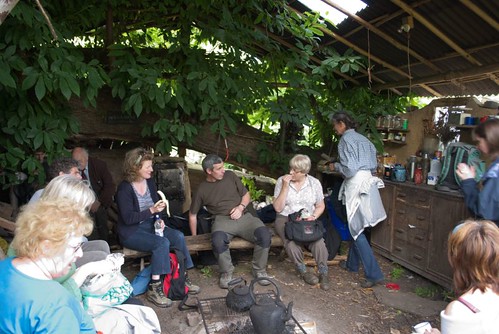
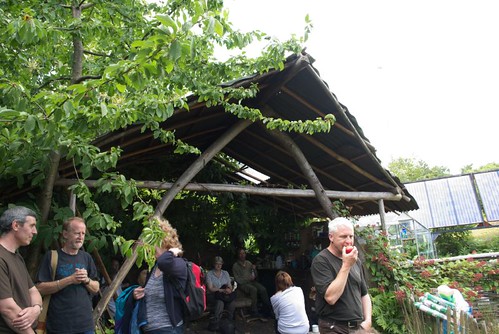 We al admired Ben's house, which he managed to get planning permission for after 10 years of living in caravans and under canvas. It's largely built from materials from his own wood, with strawbale and lime walls for good insulation. It's heated by wood stoves (naturally), with solar water heating, mini wind turbines and solar PV panels for electricity, using a large battery bank to store power for use overnight. Water comes from a spring, and composting toilets are used. So the house is totally off-grid, for both energy and water. He does have a backup diesel generator that sometimes gets used in the winter though.
We al admired Ben's house, which he managed to get planning permission for after 10 years of living in caravans and under canvas. It's largely built from materials from his own wood, with strawbale and lime walls for good insulation. It's heated by wood stoves (naturally), with solar water heating, mini wind turbines and solar PV panels for electricity, using a large battery bank to store power for use overnight. Water comes from a spring, and composting toilets are used. So the house is totally off-grid, for both energy and water. He does have a backup diesel generator that sometimes gets used in the winter though.
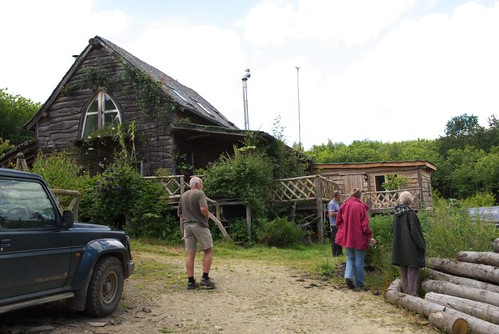
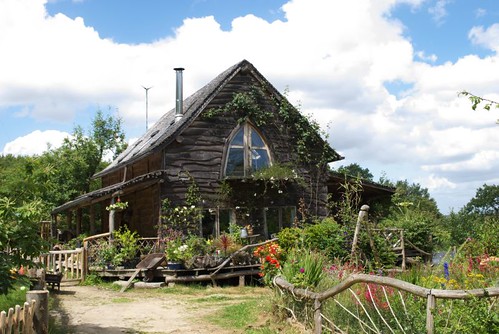
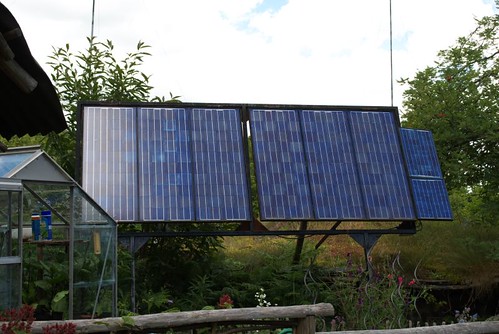 Next to the house is the workshop:
Next to the house is the workshop: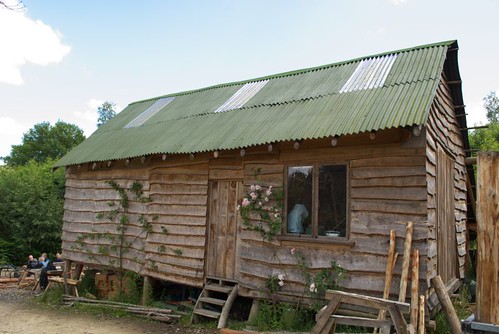
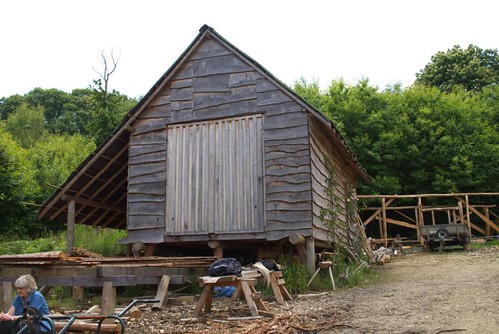
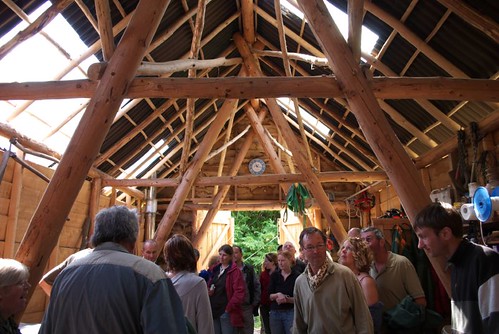 This is where Ben actually makes a living - turning the trees he's felled into useful products.
This is where Ben actually makes a living - turning the trees he's felled into useful products.
A highlight for me was the demonstration of a "logging arch". The pictures speak for themselves, I want one now!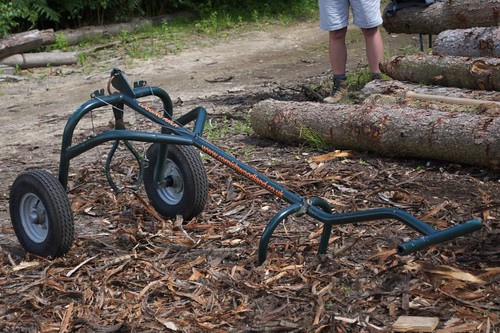

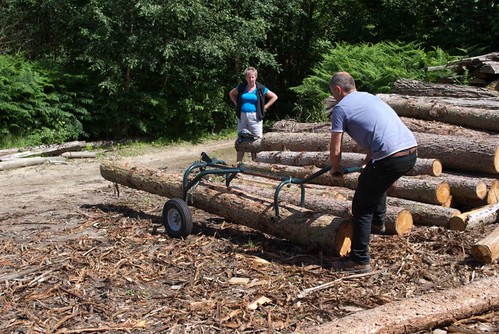
 I think I would also like some big cant hooks like these. Not sure about a sawmill though - perhaps hiring one for a day is a better option for now...
I think I would also like some big cant hooks like these. Not sure about a sawmill though - perhaps hiring one for a day is a better option for now...
 Another handy tool was a debarker:
Another handy tool was a debarker: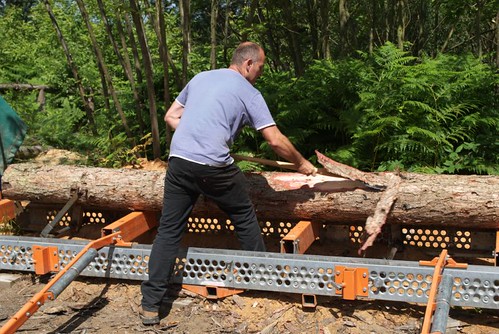 Ben doesn't only produce wood though, he also grows food. We saw a stack of logs impregnated with spores for mushroom production, and also several small orchards, such as this one nestled amongst the chestnut:
Ben doesn't only produce wood though, he also grows food. We saw a stack of logs impregnated with spores for mushroom production, and also several small orchards, such as this one nestled amongst the chestnut: That's all for now. It's been raining all afternoon, but is drying up now, so we might do an evening trip to the wood to consider our plans in the light of what we learnt yesterday...
That's all for now. It's been raining all afternoon, but is drying up now, so we might do an evening trip to the wood to consider our plans in the light of what we learnt yesterday...
Mike
Sunday, 6 July 2008
A visit to Ben Law's wood
Subscribe to:
Post Comments (Atom)

2 comments:
Nice to see you had an excellent day and real info
I'm so jealous you went to Ben Law's wood. It looks like you have a great time. His house and workshop look amazing. That is my favourite of all the grand designs houses.
Post a Comment